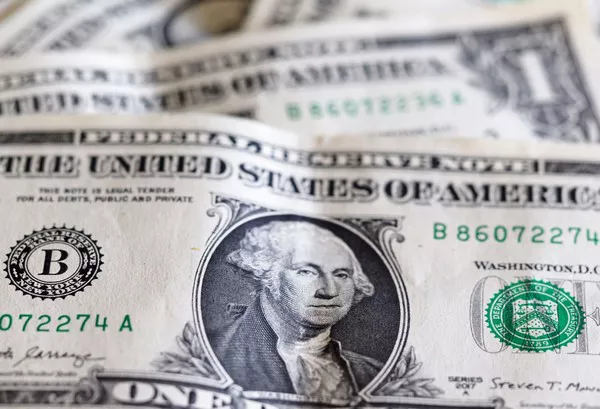The foreign exchange market plays a crucial role in the global economy, facilitating international trade and investment by allowing the exchange of one currency for another. Among the many currency pairs traded in this market, the Euro to Dollar (EUR/USD) exchange rate is one of the most significant and widely followed. In this article, we explore the current Euro to Dollar exchange rate, the factors influencing it, and its implications for various stakeholders in the financial world.
The Current Euro to Dollar Exchange Rate
1 euro is equal to 1.11 US dollars
1. The Euro and the Dollar: Two Major Players
The Euro (EUR) and the United States Dollar (USD) are two of the world’s most dominant and widely used currencies. The Euro is the official currency of 19 of the 27 European Union member countries, representing a significant portion of the European economy. On the other hand, the US Dollar is the official currency of the United States, which boasts the world’s largest economy.
Both the Euro and the Dollar play pivotal roles in international trade, finance, and foreign investment. As such, the exchange rate between these two currencies is closely monitored by businesses, governments, investors, and individuals across the globe.
2. Understanding Exchange Rates
An exchange rate is the value of one currency expressed in terms of another currency. For example, the Euro to Dollar exchange rate (EUR/USD) indicates how many US Dollars are needed to purchase one Euro. Exchange rates fluctuate continuously due to various factors, and these fluctuations can have significant implications for businesses and individuals engaged in cross-border transactions.
Exchange rates are influenced by a wide range of economic, political, and geopolitical factors, making them highly volatile and subject to rapid changes. Central banks, market forces, geopolitical events, economic data releases, and interest rate differentials all contribute to the movements in exchange rates.
3. Factors Influencing the Euro to Dollar Exchange Rate Today
As of the latest update, the Euro to Dollar exchange rate can vary on a daily basis. The exchange rate is influenced by a combination of short-term and long-term factors, some of which include:
a. Central Bank Policies: Monetary policy decisions made by the European Central Bank (ECB) and the US Federal Reserve significantly impact the Euro to Dollar exchange rate. Interest rate changes, quantitative easing measures, and forward guidance from these central banks can cause sudden shifts in the exchange rate.
b. Economic Data Releases: Key economic indicators, such as GDP growth, employment data, inflation rates, and trade balances, can sway investor sentiment and impact the exchange rate. Strong economic data in one currency area relative to the other can lead to a stronger currency.
c. Geopolitical Events: Political stability and geopolitical developments can influence the exchange rate. Events such as elections, trade disputes, and international conflicts can create uncertainty in the market, leading to fluctuations in the Euro to Dollar exchange rate.
d. Market Sentiment: Market participants’ perceptions and sentiment towards the Euro and the Dollar can influence short-term price movements. Speculative trading and investor confidence can cause exchange rates to deviate from fundamental economic factors.
4. Implications of the Euro to Dollar Exchange Rate
The Euro to Dollar exchange rate has significant implications for various stakeholders:
a. International Trade: Exporters and importers from the Eurozone and the United States are directly impacted by the exchange rate. A weaker Euro relative to the Dollar can make Eurozone exports more competitive in the US market, boosting export-driven industries. Conversely, a stronger Euro may make US imports more affordable for European consumers.
b. Investors: Investors with exposure to assets denominated in either currency will experience changes in the value of their investments based on exchange rate movements. For example, a US investor holding Euro-denominated stocks will see the value of their investment rise if the Euro appreciates against the Dollar.
c. Travel and Tourism: Exchange rate fluctuations can impact travel expenses for tourists visiting the Eurozone or the United States. A strong Dollar may make travel to Europe more affordable for US tourists, while a strong Euro could attract European tourists to the US.
d. Central Banks and Governments: Exchange rate movements can influence a country’s monetary and fiscal policies. Central banks may intervene in the foreign exchange market to stabilize their currency’s value or achieve specific economic objectives.
e. Multinational Corporations: Companies with operations in both the Eurozone and the United States are exposed to currency risk. Exchange rate fluctuations can affect revenue, costs, and profits for multinational corporations engaged in cross-border trade and investment.
Conclusion
The Euro to Dollar exchange rate is a critical indicator of the global economy, influencing international trade, investments, and financial market dynamics. As two major currencies with significant global relevance, the Euro and the Dollar’s exchange rate is subject to a complex interplay of economic, political, and market factors.
Investors, businesses, and policymakers closely monitor exchange rate movements to make informed decisions and manage their exposure to currency risk. While exchange rates can be highly volatile and subject to short-term fluctuations, understanding the underlying factors driving these movements can help stakeholders navigate the complexities of the foreign exchange market more effectively.


